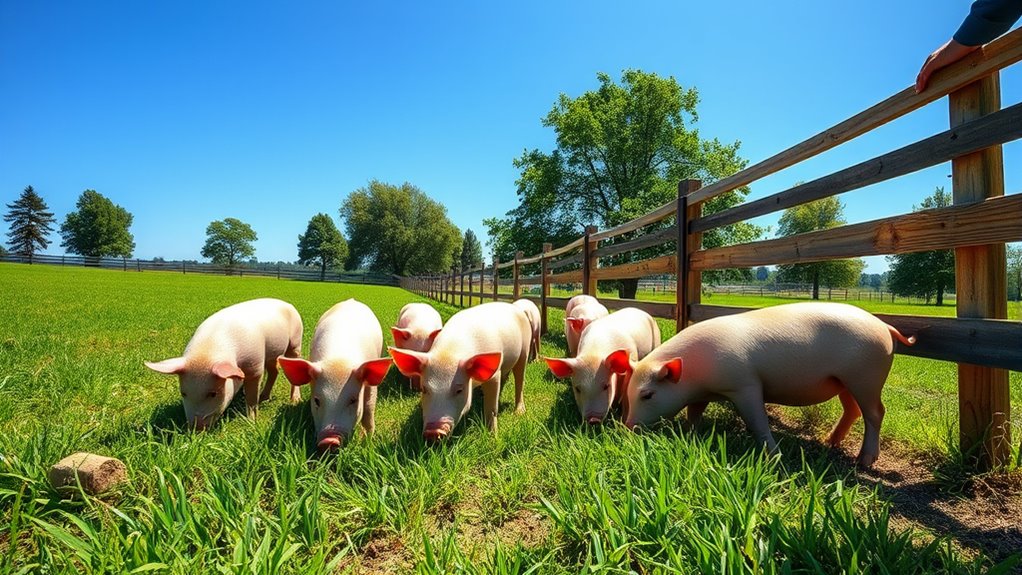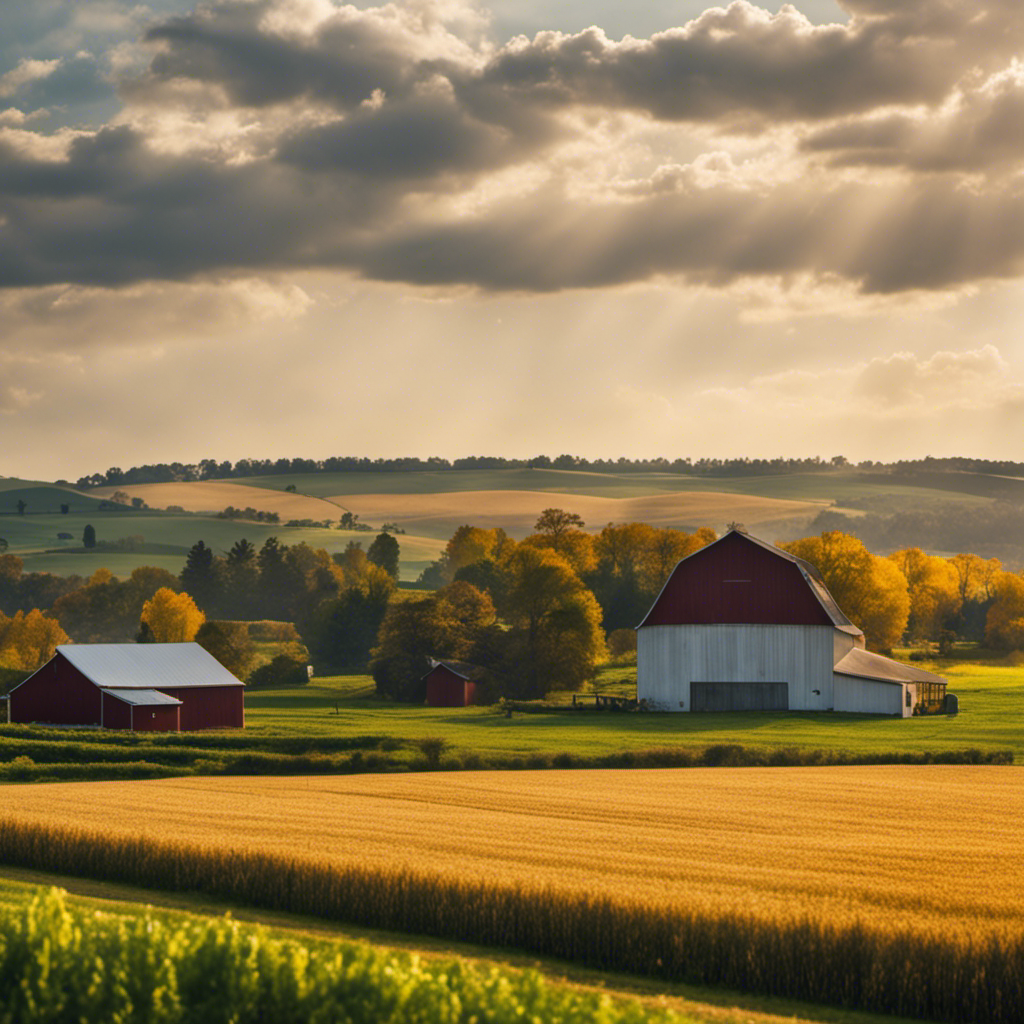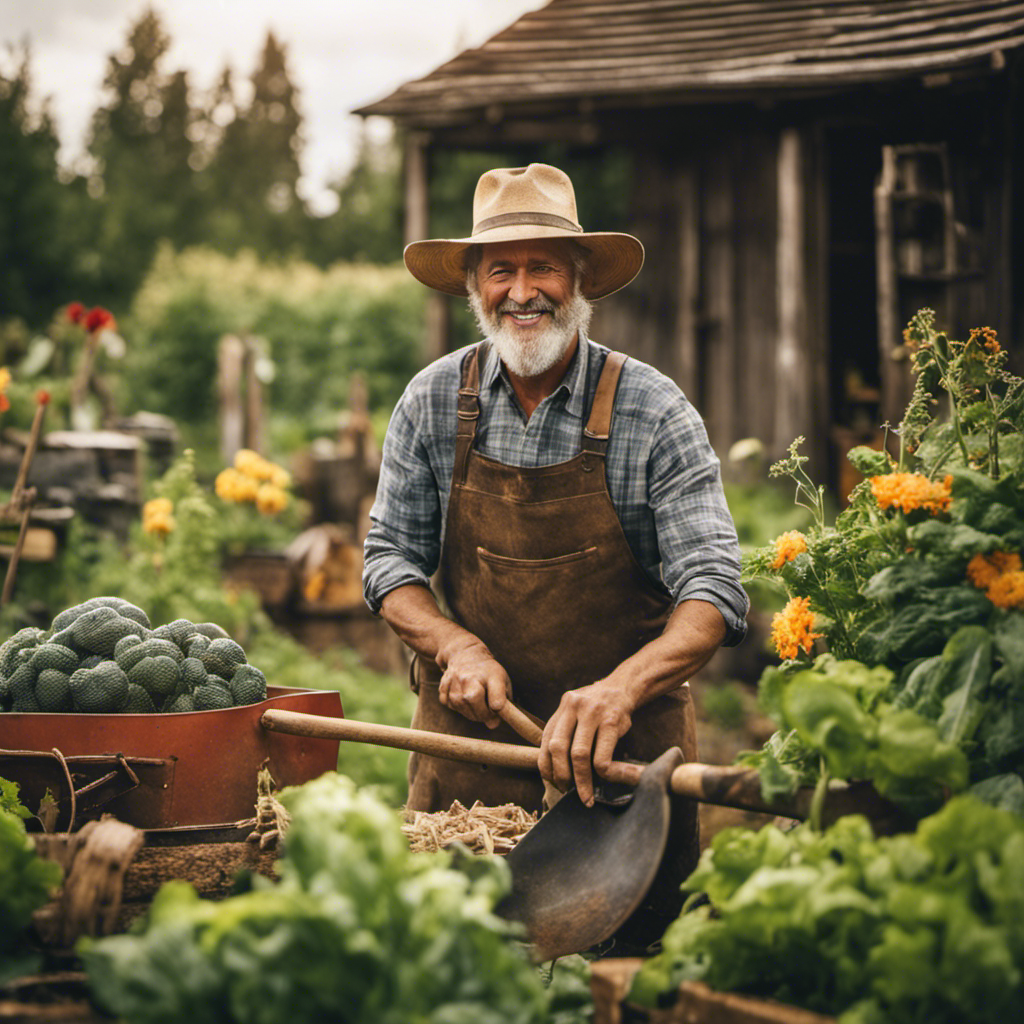To implement rotational grazing for small-scale pigs, start by dividing your pasture into manageable paddocks, ensuring each has access to fresh water and sturdy fencing. Move your pigs regularly to allow pastures to recover, which helps prevent overgrazing and parasites while improving land health. Select pig breeds suited to grazing and plan your paddock size accordingly. With proper management, you’ll enjoy healthy pigs and productive land — keep going to discover more tips for success.
Key Takeaways
- Plan and divide your pasture into paddocks, ensuring enough space for pig movement and pasture recovery.
- Select pig breeds suited for grazing and rotational systems, considering growth rate and meat quality.
- Move pigs regularly between paddocks to prevent overgrazing, reduce parasites, and promote pasture health.
- Provide access to fresh water and secure fencing to keep pigs contained and facilitate rotation.
- Monitor pig health and pasture condition continuously, adjusting rotation schedules as needed for optimal land and animal management.

Have you ever considered raising pigs on a small scale? If so, you’re beginning a rewarding journey that can provide fresh, homegrown meat and a deeper connection to your food sources. One of the first steps is understanding the pork nutritional benefits and how pig breed selection plays a vital role in that. Pigs are incredibly efficient converters of feed into meat, and properly managed, they can produce nutritious pork rich in high-quality protein, vitamins, and minerals. Choosing the right pig breed is essential because different breeds have varied growth rates, meat qualities, and adaptability to your environment. For small-scale operations, breeds like Gloucestershire Old Spot, Berkshire, or heritage breeds such as Tamworth are popular choices because they tend to thrive in rotational grazing systems and produce flavorful, well-marbled pork. These breeds often have a good balance of growth rate and meat quality, which benefits your overall sustainability and profitability.
Rotational grazing is an excellent method for managing small-scale pig production. It involves moving your pigs through different pasture sections regularly, allowing each area time to recover before the pigs return. This system not only keeps your pigs healthy by reducing parasites and disease but also improves pasture quality, making your land more productive over time. When planning your rotation, consider the size of your paddocks and the number of pigs you’re raising—aim for enough space to prevent overgrazing and soil degradation. Pigs naturally root and forage, so giving them access to varied terrain and plants enhances their diet and can improve the flavor and nutritional profile of the pork. As they forage, they’ll consume grasses, weeds, and even insects, supplementing their diet with nutrients that you might otherwise need to provide through supplemental feed.
Implementing rotational grazing requires some initial investment in fencing and water systems, but it pays off in healthier pigs and better pasture management. You’ll want to monitor your pigs closely, observing their health and behavior, and adjusting your rotation schedule as needed. Keep in mind that proper pig breed selection complements your grazing system, as certain breeds are more suited to outdoor, pasture-based systems and can handle the stress of moving around better than others. With thoughtful pig breed choices and a well-planned rotational grazing system, you’ll not only produce delicious, nutritious pork but also foster a sustainable farm that benefits both your land and your animals. This approach creates a cycle of growth and renewal, making small-scale pig raising a fulfilling and efficient endeavor.
Frequently Asked Questions
What Are the Legal Requirements for Small-Scale Pig Farming?
You need to check local zoning regulations and licensing requirements to start small-scale pig farming. Zoning laws determine if you can keep pigs on your property, while licensing ensures you’re compliant with health and safety standards. Contact your local government or agricultural office to understand specific rules, permits, and restrictions. Staying informed helps you avoid fines or legal issues, assuring your farm operates smoothly within legal boundaries.
How Do I Prevent Pigs From Escaping Rotational Grazing Areas?
Think of your pigs as curious explorers keen to wander beyond their horizon. To keep them contained, reinforce fences regularly and check for any weak spots, like cracks in a fortress. Use sturdy materials and secure gates to guarantee reliable pig containment. By maintaining strong fences and vigilant oversight, you create a safe haven where your pigs can graze freely without the risk of escape, giving you peace of mind.
What Is the Optimal Size for a Pig Rotational Grazing Paddock?
You should aim for paddock dimensions of about 0.1 to 0.2 acres per pig to guarantee ample grazing space. This size allows for effective grazing rotation, preventing overgrazing and maintaining healthy pasture. Rotate pigs every 1 to 2 weeks, depending on pasture quality, to give grazed areas time to recover. Proper paddock sizing keeps pigs safe, healthy, and encourages sustainable land use.
How Do I Manage Parasite Control in Rotational Grazing Systems?
You can effectively manage parasites naturally by implementing strategic pasture rotation timing, which breaks the parasite life cycle. Move your pigs to fresh paddocks before parasite larvae become infectious, reducing infection risks. Regularly monitor your pigs for signs of parasites, and use natural parasite management methods like adding diatomaceous earth or planting parasite-repelling herbs. This proactive approach keeps your pigs healthy while minimizing chemical use, creating a sustainable grazing system.
What Are the Costs Involved in Setting up Rotational Grazing for Pigs?
Setting up rotational grazing for pigs involves costs like fencing and grazing infrastructure. Fencing costs vary depending on material, but expect to spend a few hundred dollars for sturdy, pig-proof fencing. You’ll also need grazing infrastructure such as water sources, shelters, and portable fencing systems, which can range from $200 to $1,000 or more. Overall, initial setup costs typically range from around $500 to $2,000, depending on scale and materials used.
Conclusion
Now that you’ve learned the basics of rotational grazing for small-scale pigs, imagine the possibilities ahead. With each move, your pigs will thrive, and your land will flourish. But there’s more to discover—ways to perfect your system, prevent surprises, and truly master this method. Are you ready to take the next step? The journey to sustainable, productive pig farming is just beginning, and the best is yet to come. Stay tuned—you won’t want to miss what’s next.










